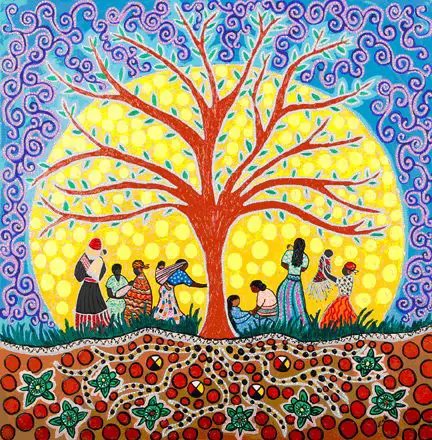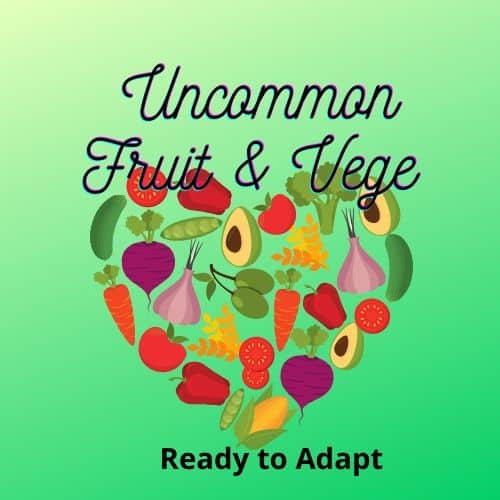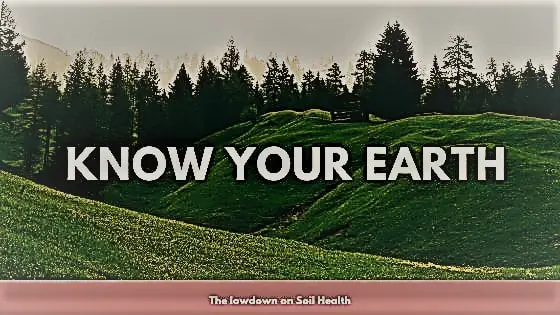You no doubt have seen some pretty spectacular gardens on display in your area but have you stopped to consider how the design is worked up and what needs to be included? In this article, we explore climate as a design item within our gardens and how to go about it.

As gardeners and humans we tend to think of our gardens as we do our homes. They are fairly simple and rudimentary shapes. Take a look at any room in your house and I will just about guarantee that it is square or rectangular. Not only that but all our furnishings tend to follow either the line of a wall or a window. We are taught at a young age to be very linear in our approach to designing our homes and gardens. It is nobodies fault – it just is the way we are. Everything is packaged in nice neat boxes.
One of the first things you learn as a designer is to throw away the ruler and set square. Seeing the patterns in our lives and nature takes practice. It is not something that comes easily to us. We are too busy to slow down and really see things as they are. But it does not need to be that way.
When we discover the patterns in nature and begin to analyse them we begin to understand how to use them to our advantage. Think about the circle for example – it is known to be the strongest shape because it has no weak point. There is no beginning and no end. What about the spiral? It is an amazing structure and can be used to build strength into our design.
Before beginning to design we must first look at our ecological context. This is equally as important as learning from nature, in fact without understanding the environment in which you live you will make catastrophic mistakes. Learning about your immediate environs will help you to understand your climate, your soil, your watershed and any surrounding human settlement patterns. This information will help you to make better and appropriate design choices.
Climate
Understanding you climate is essential for good design whether you are a seasoned professional or an amateur gardener. In fact, many of the least functional and least effiicient garden designs come from a poor understanding or downright ignorance of climate. There are three main areas that absolutely must be considered although there in fact many aspects to climate.
- Temperature – What are you average highs and lows throughout the year? What are the extremes? Your local department of meteriology will have records and many of them are available online. Using permaculture design methods it is critical to know your extremes. You don’t want to plant bananas in the snow.
- Precipitation/Rainfall – How much rain do you normally recieve? How does it arrive eg in small but frequent sprinkles or torrential downpours? How much of your rainfall is actually snow or ice? What are the extremes? Eg worst drought – worst flooding events. Do you know your evaporation rates? Does this outweigh the rainfall?
- Seasons – When does your rainfall occur? When are the cold snaps or heat waves likely to occur? What other factors change with the seasons? Wind? Fire Risk?
Have you ever seen a climatogram? This is one way of visualising the climate for you area. It shows precipitation and temperature extremes throughout the year to give you an idea of your climate patterns. It also includes a line graph for temperature highs and lows. Climate Charts Online does some of the work for you. As you can see below I have chosen an area called Carrols Creek in NSW to search data. The following charts show average rainfall from 1960 to 2018 as well as average temperature. The second group of charts also show extremes.


You will also want to determine your plant hardiness zone or Koppen Climate Classification. The Australian Beaurea of Meterology last updated this map in 2001 so I don’t think it is particularly useful given the extremes this country has seen in the last 20 years that does not take into account climate change. The following images from Oxewez show a much more accurate depiction of where we are now versus were we are going to be in the next 50 years. Remember, Global Warming will have a significant impact on our gardens – so as extremes go we should factor that in to.

And now for the scarey bit.

Similar images are available for any country on the planet. The Koppen system divides the earth into different classifications based on termperatures, precipitation and seasonality. As above this gives us a good idea of what to expect and how to choose our plantings. Don’t be too literal though, the Koppen system is a fairly broad classification and as such you should be aware of it and then do your own local research. Talk to older generations to find out what grows best in your location and what the extremes really looked like in your local area. For example, where I live the oldtimers say the 1956 drought was the worst ever but we are now in the grips of yet another drought and they are all amazed at this or that creek that has never before run dry. Our current drought is historically the worst on record for over 150 years.
So we need to understand our climate classifications before we can delve deeper. Broadly speaking we are aware of Temperate, Tropical, Arid and Polar Zones. Lets break them down a little further though.
Temperate Zone
This includes most places at the mid-latitudes. We have four distinct seasons. Ocean and air currents, large bodies of water and topography can cause large variations in temperatures but mostly tend to be moderate as compared to the polar or tropical regions. Day length in summer and winter are noticeably different in the Temperate Zone, creating seasonal variations that we enjoy such as winter weather in front of a warm fire or warm summer days spent with friends out and about in nature. Life in the temperate zone is largely predictable. Temperate gardens tend to include deciduous trees, berry fruits and cold tolerant plants.

Tropical Zone
The Tropical zone includes all places that are between the Tropic of Cancer in the Northern Hemisphere and the Tropic of Capricorn in the Southern Hemisphere. Both sit at around 23 degrees North or South. Everything in between is in the Tropical Zone. These areas tend to be hot with cooler temperatures found at elevation. Day length remains fairly constant throughout the year. Precipitation is variable depending on proximity to large bodies of water and tropical air flows, but generally higher closer to the coast. A sub tropical climate is defined as one that is close to the tropical lines and have a tropical climate for part of the year. Tropical gardens tend to include evergreen and tropical species such as Banana, Palms, Ferns and, Mangos.

Arid Zone
While this is typically used as a modifier by Koppen that is applied to the first two climate zones it specifically refers to precipitation. As identified above there are areas within temperate and tropical zones that do not recieve a lot of rainfall. These are generally areas where evaporation exceeds rainfall. This is important to understand as the methods of design and implementation of permaculture are very different to those areas that receive more regular rainfall and have less evaporation. In Australian terms, all of our inland or central areas fall into this category. In the US places like Arizona, and Tuscon are especially arid and in the north of Africa and Northwestern China. Typically, plants used in these locations tend to be very drought tolerant and may include cacti, grasses, dates, and native plants.

Polar Zone
There is one zone left to discuss – the polar zone. Clearly, this zone is within the polar circles. Daylight is scarce and long periods are spent in darkness. Little grows naturally due to the lack of light and cold. The growing season is nearly non-existant. Most living in these zones have developed heated indoor spaces or glass/greenhouses in which to grow some basic staples. Typical crops are focussed on root vegetables and greens such as kale, chard and turnips. Life is hard under such conditions.

Putting all this information and context together for your own site will result in a climate profile that will assist you through the design process. It will also help you to see how climate is changing both in the past and in the future. Armed with this knowledge you will be better placed to design your permaculture site for an abundant future. Next time we will look at other patterns that affect how you design your site.



